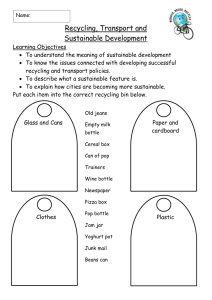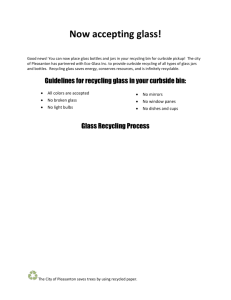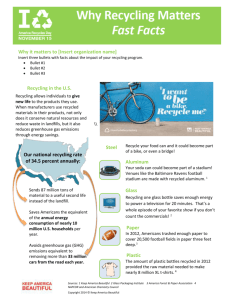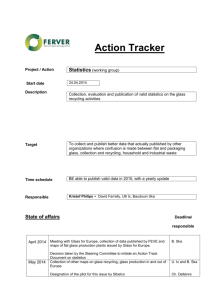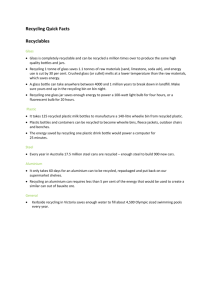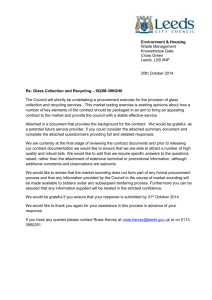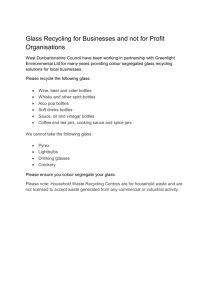Marvellous Materials - Suffolk Schools Recycling
advertisement
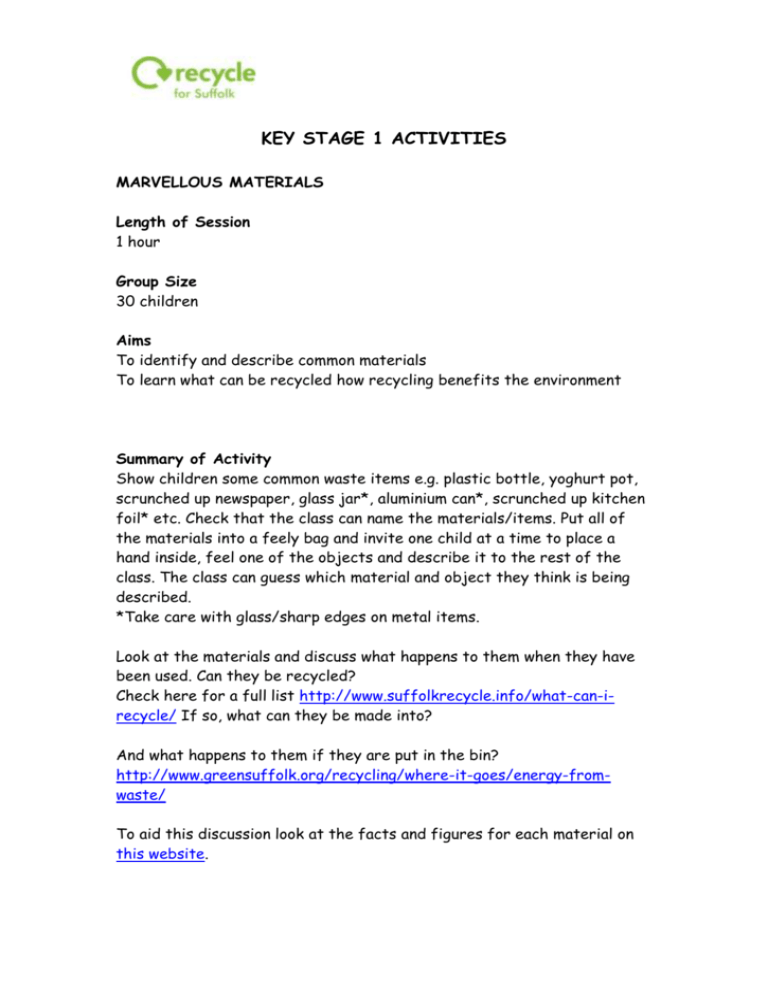
KEY STAGE 1 ACTIVITIES MARVELLOUS MATERIALS Length of Session 1 hour Group Size 30 children Aims To identify and describe common materials To learn what can be recycled how recycling benefits the environment Summary of Activity Show children some common waste items e.g. plastic bottle, yoghurt pot, scrunched up newspaper, glass jar*, aluminium can*, scrunched up kitchen foil* etc. Check that the class can name the materials/items. Put all of the materials into a feely bag and invite one child at a time to place a hand inside, feel one of the objects and describe it to the rest of the class. The class can guess which material and object they think is being described. *Take care with glass/sharp edges on metal items. Look at the materials and discuss what happens to them when they have been used. Can they be recycled? Check here for a full list http://www.suffolkrecycle.info/what-can-irecycle/ If so, what can they be made into? And what happens to them if they are put in the bin? http://www.greensuffolk.org/recycling/where-it-goes/energy-fromwaste/ To aid this discussion look at the facts and figures for each material on this website. The class then act out the journey a glass bottle takes from the glass bottle bank through the recycling process. Children can make appropriate movements/sound effects! Glass Bottle Recycling Journey – See Viridor’s educational video for the majority of the process https://www.youtube.com/watch?v=UAnzQl-EIs4 Another glass recycling video here - http://www.recyclenow.com/factsfigures/how-it-recycled/glass-bottles Bottle tops are removed (to be recycled separately), and bottles are emptied and washed. They are then taken to the local bottle banks. The bottle banks are emptied into a big truck recycling and taken to the processing centre where they are washed and labels and metal rings are removed. Bottles are then sorted by glass colour (clear and brown glass is kept separate and blue/green glass is put together). The glass is then smashed to form glass cullet which is taken to the glass factory. Here it is heated in a furnace (sand, soda ash and limestone added) and then reshaped to form a new bottle/jar. These are then transported to a factory to be filled and labelled and finally off to a shop to be sold. Finish the session by asking children to sort and stick pictures of recyclable items onto a recycling bin picture (the colour of the recycling bin can vary depending on where you live ). This could be mounted on scrap card and a magnet added to form a fridge magnet. Resources Feely bag and selection of clean waste Picture of landfill Recycling bin and recyclables pictures Scissors Glue sticks Magnets Cardboard Coloured pencils/felt tip pens
